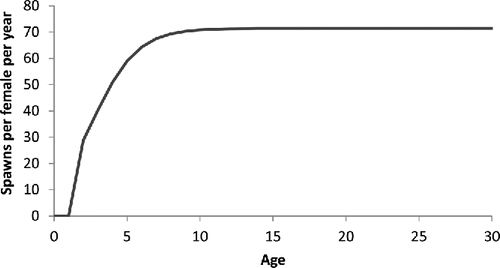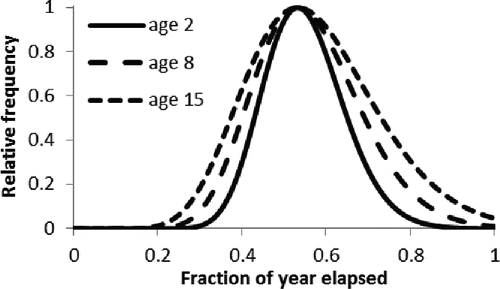Figures & data
TABLE 1. Number of Red Snapper females and fraction bearing histological spawning markers by age-class from the 2011 congressional supplemental survey.
TABLE 2. Summary of Red Snapper females from the 2011 congressional supplemental survey. Within each approximate 2-week period, the initial date of sampling is listed. The numbers of sampling dates and females and fraction of females bearing histological spawning markers are indicated, along with the mean and range of age. The survey covered a total period of 198 d.
TABLE 3. Plausible biophysical and sampling-related explanations for perceived trends in spawning frequencies of Red Snapper by stage, depth, region, gear, and season. If the model is approximately correct, biophysical causes for changes in spawning frequency should manifest as parameter estimates that are statistically different from the null model.
FIGURE 1. Distribution of sampling stations with zero (× symbol) and positive catches of Red Snapper during the 2011 supplemental survey (grey circle; progressively increasing size of circle indicates number landed per set: 1–4, 5–10, 10–13, 14–17, 18+). Solid dark symbols indicate capture locations of females with spawning markers (round symbols: bottom longline gear, triangles: bandit gear). The 50-, 100-, 200-, 1,000-, 1,300-, and 2,000-m isobaths are indicated. Statistical subareas are denoted from 1 to 21 within U.S. Gulf of Mexico waters. Numbers along horizontal and vertical borders of figure are longitude and latitude, respectively. Note that symbols are for graphical illustration and do not reflect scale of area fished per station.
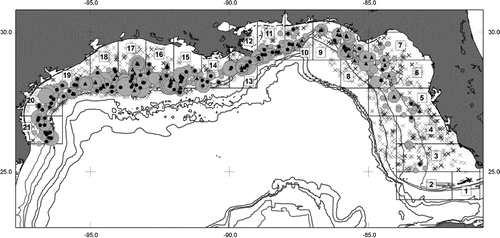
TABLE 4. Length-based and age-based models for Red Snapper spawning fractions developed during the stepwise model building procedure (based on the binomial regression of Equationequation 6(6) ). The shaded column highlights the final models. The use of t′ indicates the model allows the seasonal effect to vary with age or length. Subscripts refer to gear or region (subscripts in parentheses identify the gear–region combination when gear and region effects are estimated simultaneously); l = length, a = age, t = time elapsed, d = depth, g = gear type, r = region (see text for explanation), NA = not applicable.
FIGURE 2. Observed number of Red Snapper with spawning markers compared with the corresponding predictions of the final model (length + season, or age + season) and full model (all covariates included). Panels show the results for (A) length and (B) age.
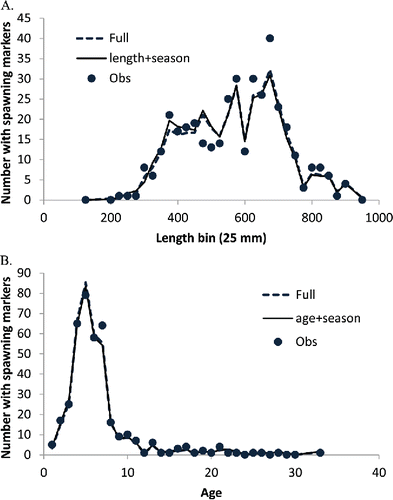
FIGURE 3. Average observed spawning fraction of Red Snapper (primary axis) compared with model predictions of relative proportion of females with spawning markers (secondary axis) by time of year for age-based and length-based models.
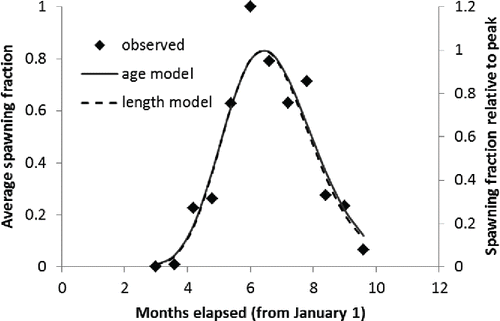
FIGURE 4. Predicted relationships between spawning fraction of Red Snapper (proportion of females with spawning markers) and (A) length (mm) or (B) age (years).
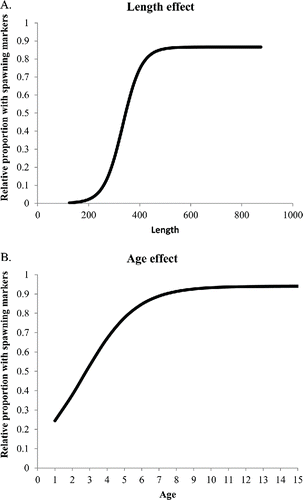
TABLE 5. Correlation matrix for final models to determine Red Snapper spawning fractions.
FIGURE 6. Comparison of maturity of Red Snapper and relative spawning frequency at age (years). Female maturity was based upon the presense of vitellogenic or maturing oocytes during the peak reproductive months of June, July, and August. The label on the vertical axis, relative fraction, refers to the value for maturity at age or spawning frequency at age divided by their respective maximum values (to put the two measures on the same scale).
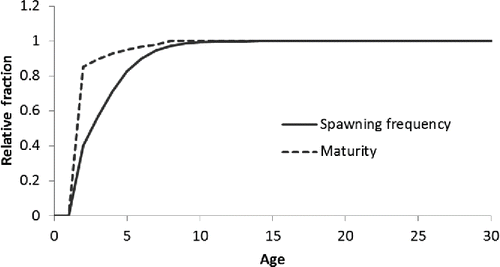
FIGURE 7. Trends in (A) relative per-capita fecundity at age (years) and (B) relative population fecundity at age (combined fecundity of all members in the age-class) in Red Snapper when the calculated number of spawns per female per year is used (solid bars) compared with the trends when spawning frequency is assumed to be proportional to maturity (open bars). The label “BFE * No. Spawns” refers to the calculation where age-specific estimates of batch fecundity are multiplied by age-specific estimates of the number of spawns per year. Similarly, the label “BFE * Maturity” refers to the calculation where age-specific estimates of batch fecundity are multiplied by age-specific estimates of maturity. The relative (population) fecundity is obtained by multiplying the per-capita fecundity at age by the relative abundance of each age-class at the equilibrium level associated with fishing at the maximum sustainable yield.


